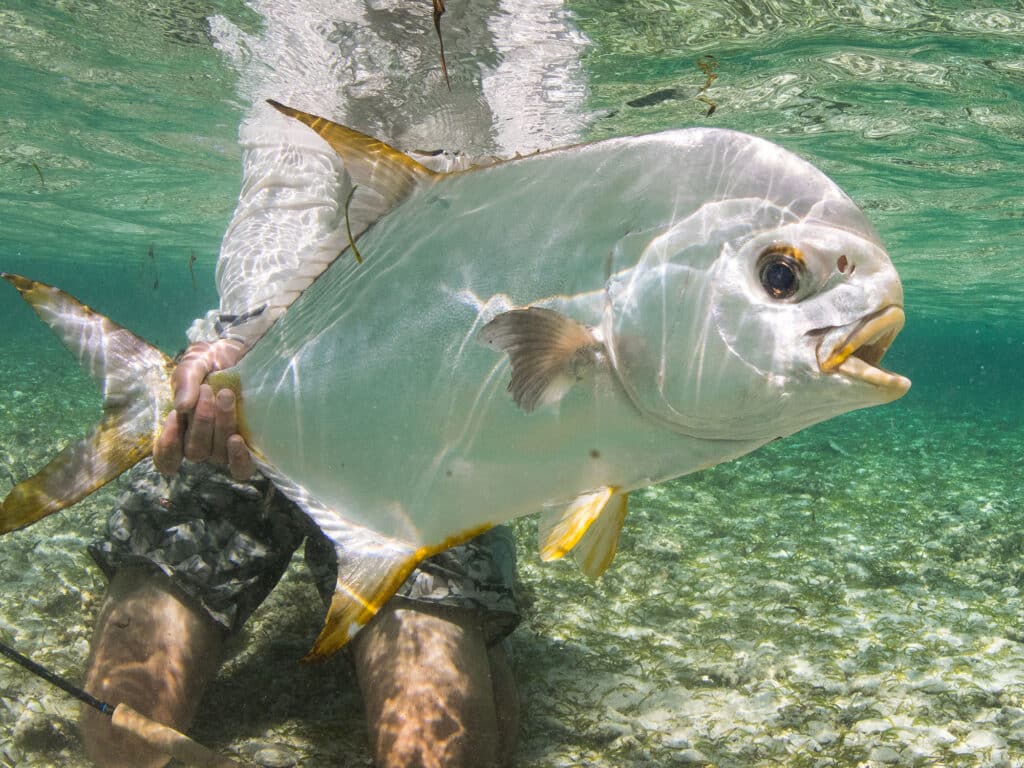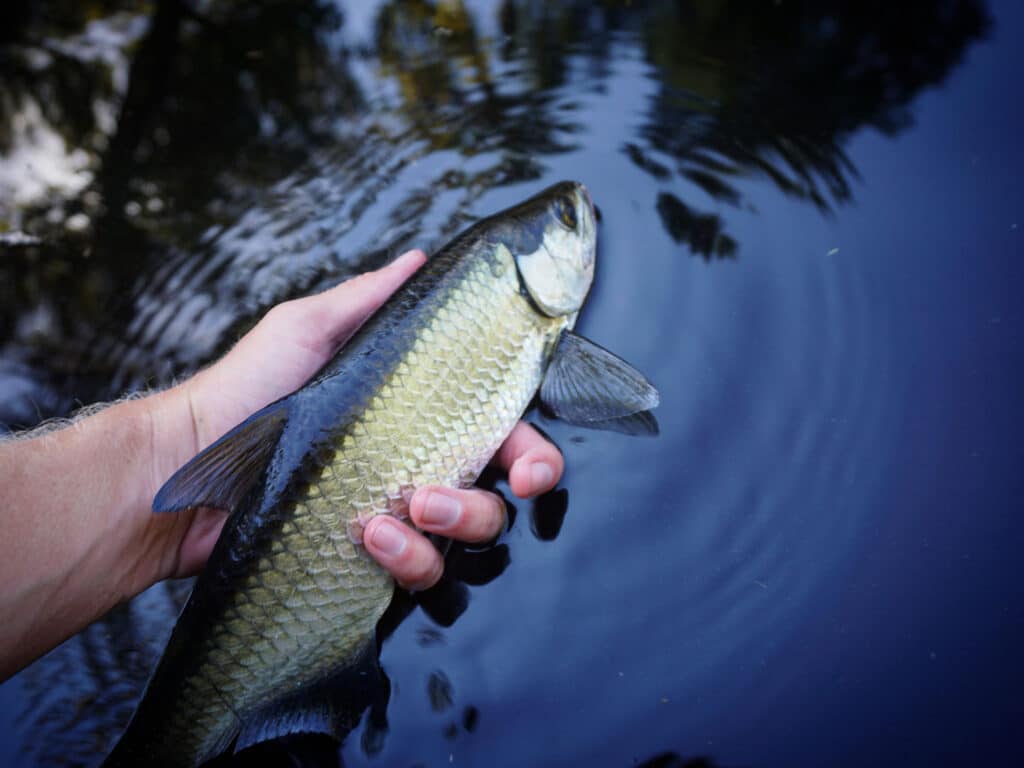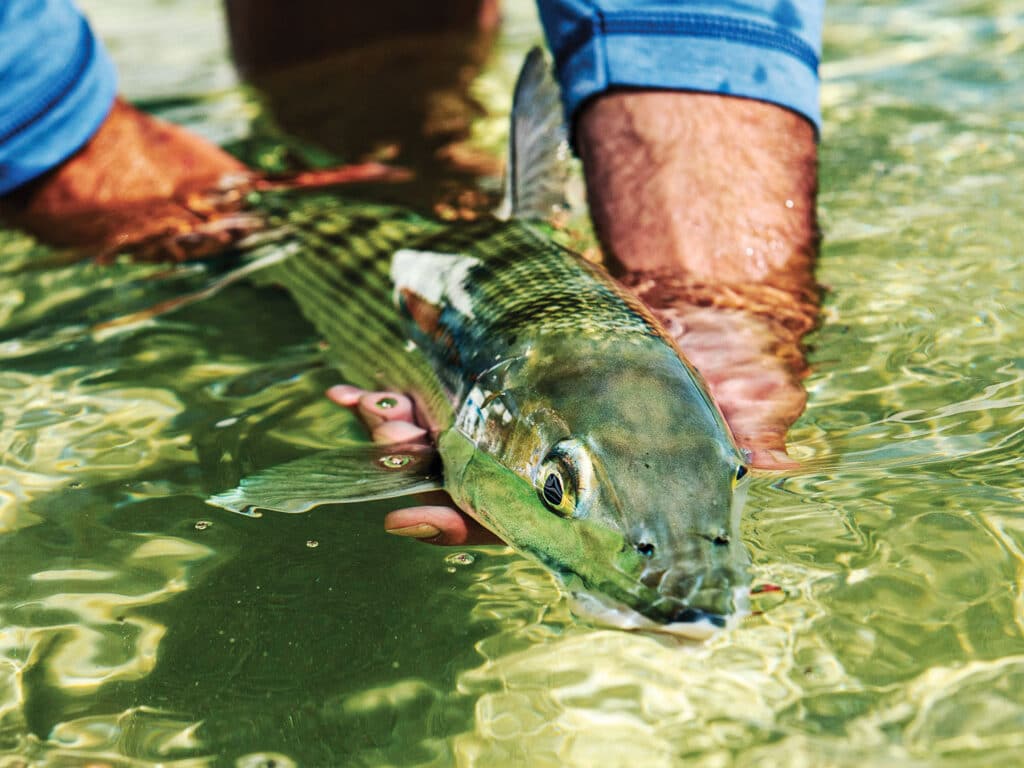If you get the opportunity, jump at the chance to target and catch these gamefish. Here are some details you might not know about these top flats species.

The Not So Common Permit
For permit addicts, the Florida Keys is a special place. But the holy grail is somewhere else entirely: the Seychelles. The Indo-Pacific permit, with its yellow-tipped fins, thrives here on the remote Poivre and St. Joseph atolls. Sometimes called the snubnose pompano, it’s a top-five fish for any globe-trotting flats fly angler.
But this Indian Ocean adventure is not for the weak, requiring plenty of planning and travel to get there. Then, it’s wade-fishing all day on shallow flats, searching for a fish known to laugh at a perfectly placed crab fly. Once you hook and hold one, all that frustration disappears. —Sam Hudson

In Honor of the Toughness of Tarpon
Tarpon are survivors. After all, they’ve been swimming the seas since dinosaurs roamed the earth. They can live more than 70 years. How have tarpon survived for so long when so many other species have gone extinct? It’s their ability to survive in a wide variety of conditions, and on a wide variety of sustenance.
The silver king can live in full fresh or full salt water, but most important is its special ability to breathe air at the surface using a row of lunglike tissue in the swim bladder. As juvenile fish, this allows them to live in stagnant, low-oxygen waters with fewer predators and competition. Canals, ditches, ponds—waters that don’t connect to salt water for most of the year—are no problem for them.
And the juvies make do with whatever food they can forage in these backwaters. Baby tarpon are opportunistic feeders, eating ants, shrimp, crabs and fly larvae. In fact, in 2020, Bonefish & Tarpon Trust highlighted a study that looked at the diets of juvenile tarpon in seven Florida locations. The conclusion: Tarpon will eat whatever fits in their mouths. —Nick Roberts

Bonefish Slime Matters
Props to conservation organization Bonefish & Tarpon Trust, which recently launched the Save the Slime campaign to promote proper bonefish handling techniques, developed in collaboration with top guides and bonefish lodges. Poor handling can remove their protective mucus layer and leave them vulnerable to sharks after release.
The techniques boil down to this: Avoid touching the fish, and if you want to hold one for a quick photo, then do so without sun gloves and limit air exposure to less than 10 seconds. Research shows that a bonefish held out of water for longer than that is six times less likely to survive once released.
As the campaign slogan proclaims: “The important part isn’t how you catch them. It’s how you let them go.” —Nick Roberts

Pumpkins With Fins
Over my 40-plus years of feeding flies to redfish in five coastal states, little compares to the Louisiana marsh. The shallow-water, bull redfish in bright auburn hues are like nothing else in inshore fishing. I call Venice “the Pumpkin Patch” due to the color and size of the red drum willing to eat a fly any day of the year.
On my first cast to a string of 30-plus-pounders one November morning, I made the typical “Florida cast,” leading the oncoming fish by 5 feet. They were gliding slowly, pec fins out, glowing golden orange in the muddy water.
“Mike, pick up and go again. Give the lead fish a mustache,” urged Capt. Brian Esposito from the poling platform. I picked up my line and slapped my big, bushy streamer between the fish’s eyes. The take was immediate and explosive. I cleared my running line to the reel and held on as it towed the skiff. After a couple of bulldogging runs, Esposito staked the pole and grabbed the fish. It weighed 31 pounds.
“A pretty good one,” Esposito said. “But we’ll see bigger, I promise.”
And we did. The pumpkin parade went on all day—singles, pairs, small schools. Out of about 40 shots, we landed 30 or more reds.
This happens year-round in Louisiana, with the biggest fish common from fall through spring. I once fished with a guide on a January week when the Roseau cane lining the outer marsh was covered in ice all day, with highs in the upper 30s. And amazingly, the fish ate flies. So, book a Louisiana poling guide, dress right, and be damn sure to give ’em a mustache. Chances are you’ve fished for reds, but haven’t experienced anything like Louisiana’s Mississippi river mouth monsters. —Mike Conner

A Striped Bass Favorite: Sand Eels
Sand eels are one of the baits that cause stripers to abandon caution and venture into dangerously skinny water. Correctly known as a sand lance, these thin, eel-like fish burrow directly into the sand. While some stretches of the coast have sand eels all season long, fall brings in large schools that hug the shoreline, and stripers follow.
Schools of 20- to 30-pound stripers are often right on their heels, slipping along the lip of an open beach with their backs and pectoral fins cutting the surface, massive tails wagging back and forth. These feeding frenzies look like something out of a BBC wildlife documentary, and offer some of the most exciting fishing of the entire season. —Joe Albanese








